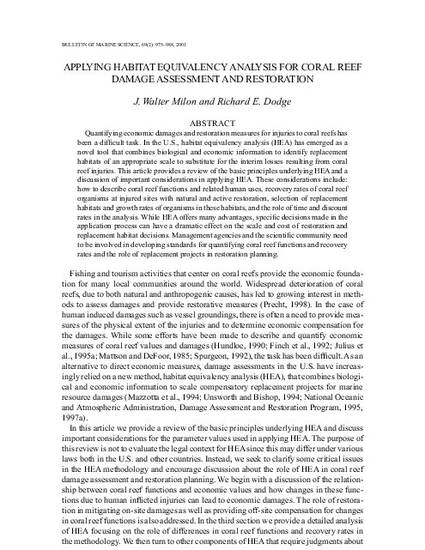
- Coral reefs,
- Conservation of natural resources
Quantifying economic damages and restoration measures for injuries to coral reefs has been a difficult task. In the U.S., habitat equivalency analysis (HEA) has emerged as a novel tool that combines biological and economic information to identify replacement habitats of an appropriate scale to substitute for the interim losses resulting from coral reef injuries. This article provides a review of the basic principles underlying HEA and a discussion of important considerations in applying HEA. These considerations include: how to describe coral reef functions and related human uses, recovery rates of coral reef organisms at injured sites with natural and active restoration, selection of replacement habitats and growth rates of organisms in these habitats, and the role of time and discount rates in the analysis. While HEA offers many advantages, specific decisions made in the application process can have a dramatic effect on the scale and cost of restoration and replacement habitat decisions. Management agencies and the scientific community need to be involved in developing standards for quantifying coral reef functions and recovery rates and the role of replacement projects in restoration planning.
